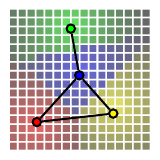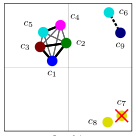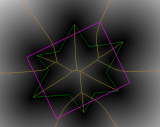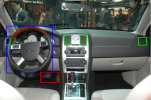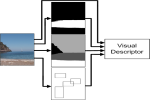DRVQ is a C++ library implementation of dimensionality-recursive vector quantization, a fast vector quantization method in high-dimensional Euclidean spaces under arbitrary data distributions. It is an approximation of k-means that is practically constant in data size and applies to arbitrarily high dimensions but can only scale to a few thousands of centroids. As a by-product of training, a tree structure performs either exact or approximate quantization on trained centroids, the latter being not very precise but extremely fast.
Image and Video Analysis IVA
IVA
 IVA
IVA 